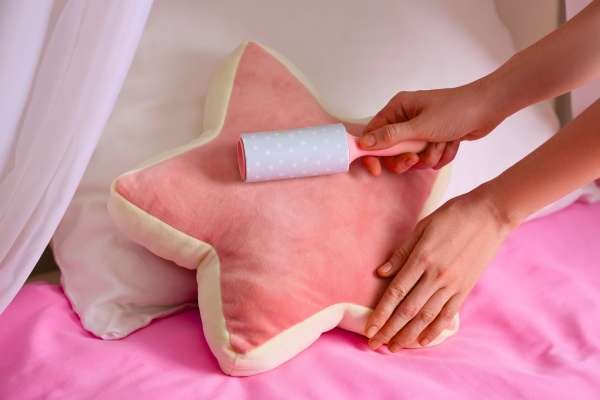If you’re looking to reconfigure your living space, learning how to disconnect a sectional sofa with pins is essential. This practical guide will walk you through the process step-by-step, ensuring a smooth and hassle-free experience. Whether you’re rearranging furniture for a new look or preparing for a move, mastering this task will save you time and effort. By following our expert tips, you’ll avoid common pitfalls and make your sectional sofa work perfectly in any room layout. Read on to discover the best methods for safely and efficiently disconnecting your sectional sofa with pins.
How to Disconnect a Sectional Sofa with Pins: A Step-by- Step Guide
- Clear the Area: Make space around the sofa.
- Find the Pins: Locate connecting pins at the joints.
- Remove Cushions: Take off cushions and covers.
- Disengage pins: Gently pull or lift pins with pliers if needed.
- Separate Sections: Carefully pull the pieces apart.
- Check for Extras: Look for and disengage any extra connectors.
- Reassemble/Store: Reassemble in a new layout or store pieces, keeping pins safe.
Understanding Sectional Sofas and Their Assembly

Understanding sectional sofas is crucial for effectively disconnecting them. These sofas boast a modular design, allowing for versatile arrangements to suit various spaces. Connectors often hold them together, with pins being a common type. These pins play a pivotal role in securing the sections together. Proper disassembly is essential for tasks like moving, cleaning, or rearranging furniture. By grasping the intricacies of divisional couch assembly, including the role of connectors like pins, individuals can confidently tackle disassembly tasks, ensuring seamless transitions and preserving the integrity of their furniture.
Preparing for Disassembly
Preparing for the disassembly of your sectional sofa begins with clearing the surrounding area for easy maneuverability. Ensure ample space to work around the couch, minimizing obstacles. Gather essential tools like screwdrivers, pliers, and, optionally, a rubber mallet to aid in the disconnection process. Having these tools readily available streamlines disassembly and prevents interruptions. Additionally, mental preparation is crucial for a smooth experience. Visualize the steps involved, anticipate any challenges, and plan accordingly. By mentally preparing and gathering the necessary tools, you set the stage for a successful disassembly of your sectional sofa with pins.
Identifying Pin Connections
To start disconnecting your sectional sofa with pins, it’s crucial to first identify these connectors. Pin connections typically hide beneath the upholstery or within the couch frame. Understanding their placement is essential for a smooth disassembly process. Once located, grasp how these pins securely hold couch sections together, often through friction or locking mechanisms. Additionally, inspect pins meticulously for any signs of damage or wear, such as rust or bending. This proactive step ensures safe handling and prevents potential mishaps during disassembly. By mastering the identification of pin connections and assessing their condition, you’re equipped to proceed confidently with the next steps of disconnecting your sectional sofa.
Removing Cushions and Fabric

To access the connection points, start by removing the cushions and upholstery from your sectional sofa. This step clears the way for disconnecting the sections held together by pins. To safeguard your fabric during disassembly, handle it with care and consider using protective covers or blankets. Additionally, clean or vacuum exposed areas to eliminate any dirt or debris that might impede the process. By taking these precautions, you ensure a smooth disassembly process while keeping your sectional sofa in pristine condition for future use.
Disengaging Pin Connections
When it comes to disengaging pin connections on your sectional sofa, a methodical approach is essential. Begin by carefully examining the pins to understand how they’re secured. If you encounter stubborn or tight pins, don’t force them. Instead, try gently wiggling or rotating the sections to loosen them. Applying slight pressure while keeping a steady hand is crucial to preventing any damage to the couch or connectors. Remember, patience is key in this process. By following these step-by-step instructions and employing gentle techniques, you’ll ensure a smooth disconnection of the sectional sofa, making it easier to move, clean, or rearrange your living space.
Handling and Storing Disconnected Sections
When handling and storing disconnected sections of a sectional sofa, safety and care are paramount. Begin by safely lifting and moving each couch section, ensuring proper support to avoid strain or damage. Utilize blankets or furniture sliders beneath sections to safeguard floors and prevent unsightly scratches. Once disconnected, store sofa sections in a secure location, free from potential hazards that could cause damage. This might involve stacking sections vertically or horizontally in a designated area, ensuring They remain stable and protected until reassembly. By following these simple yet effective tips, you can preserve the integrity of your sectional sofa during disassembly and storage, ensuring it remains in pristine condition for future use.
Inspecting and Maintaining Pins
Maintaining the integrity of pins is crucial for smooth sectional sofa disassembly. Regularly inspecting pins for wear or damage helps prevent potential issues. A simple visual check can identify any signs of wear and tear, ensuring the pins are in optimal condition. Additionally, cleaning and lubricating pins with a suitable product enhances their performance, facilitating effortless assembly and disassembly. Should any pins show signs of damage or if any are missing, prompt replacement is advisable. Keeping spare pins handy ensures swift resolution of any issues, allowing for continued use and enjoyment of your divisional couch without interruptions. By prioritizing the upkeep of pins, you ensure the longevity and functionality of your sectional sofa for years to come.
Troubleshooting Common Issues
Encountering obstacles like stuck or misaligned pins is common when disconnecting sectional sofas. To overcome this, gentle pressure and careful maneuvering are essential. Additionally, if sections don’t align correctly upon reconnection, adjusting the positioning or applying lubricant to the pins can often resolve the issue. However, for more complex problems that persist despite troubleshooting efforts, it’s wise to seek professional assistance. Trained experts possess the knowledge and tools necessary to tackle intricate disassembly challenges effectively, ensuring the safety of your furniture and preventing potential damage. By recognizing when to enlist professional help, you can navigate any unexpected hurdles with ease, ultimately achieving a successful and stress-free sectional sofa disconnection experience.
Reassembling the Sectional Sofa

When reassembling your sectional sofa, follow these simple steps to ensure a seamless process. First, carefully align the couch sections, ensuring they fit snugly together. Next, insert the pins into their corresponding slots, double-checking alignment for a secure connection. Finally, tighten any screws or fasteners to reinforce the stability of the couch. By following these instructions meticulously, you guarantee a sturdy and comfortable seating arrangement. Whether you’re rearranging your living room or moving to a new space, mastering the art of reconnecting divisional sofa sections ensures a stress-free experience. With attention to detail and a systematic approach, you’ll have your sectional sofa back together in no time, ready to enjoy its comfort and functionality once again.
Testing Stability and Comfort
After reassembling your sectional sofa, it’s crucial to ensure stability and comfort. Begin by checking the couch’s stability to guarantee it’s securely put together. Next, take a seat in each section to assess comfort and alignment. Pay attention to how the cushions feel and whether there are any noticeable gaps or unevenness. If adjustments are needed for optimal performance, address them promptly. This might involve tightening connectors or readjusting sections to achieve the desired comfort level. Ultimately, thorough testing ensures that your sectional sofa not only looks great but also provides the comfort and stability you expect, making it ready for cozy gatherings or relaxing evenings at home.
FAQs for How to Disconnect a Sectional Sofa with Pins
1. What tools do I need to disconnect a sectional sofa with pins?
💥Typically, you only need your hands and possibly a pair of pliers for stubborn pins.
2. Do I need to remove the cushions before disconnecting the sofa?
💥Yes, removing cushions and covers helps access the pins and prevents damage.
3. How do I locate the pins on my sectional sofa?
💥Look for pins at the joints where the sectional pieces connect, usually near the base or sides.
4. What should I do if the pins are stuck?
💥Use pliers to gently pull or twist the pins loose, being careful not to damage the sofa.
5. Can I reconfigure my sectional sofa after disconnecting the pieces?
💥Yes, you can rearrange the sections in a new layout or store them as needed.
Conclusion
In conclusion, mastering how to disconnect a sectional sofa with pins is a valuable skill for any homeowner. By following the steps outlined in this guide, you can easily and safely reconfigure or move your furniture as needed. Remember to prepare your workspace, locate and disengage the pins, and handle each section with care. Whether you’re rearranging your living space or preparing for a move, these tips will ensure a smooth and efficient process. Keep your sectional sofa versatile and adaptable by understanding how to disconnect and reconnect it whenever necessary. Enjoy the flexibility and convenience this knowledge brings to your home.
